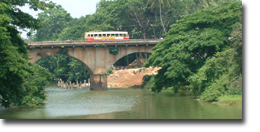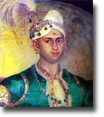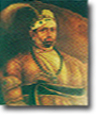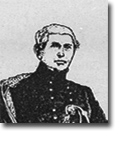Public Works Department
 The Public Works Department: The construction of the Sree Padam palace, during the former reign, on a plan drawn by a European Engineer, had impressed Swathi Thirunal with a favorable opinion of European engineering skill. The construction of the Observatory simply confirmed this impression.
The Public Works Department: The construction of the Sree Padam palace, during the former reign, on a plan drawn by a European Engineer, had impressed Swathi Thirunal with a favorable opinion of European engineering skill. The construction of the Observatory simply confirmed this impression.
The Maramut Department for the repair and construction of palaces, temples etc was also reorganized and an experienced Superintendent appointed. A few companies of pioneers were formed for irrigation works at Nanjenaud, under the general supervision of the Visiting Engineer Lieutenant Horsely, who began to devote his unremitting attention to the improvement of all the maramuth works in Travancore. This very able Engineer’s literacy work “Memoirs of Travancore”, written at the request of the Resident, Colonel Fraser, shows his knowledge of the country, and how he exerted himself to be closely acquainted with everything connected with Travancore.



When Horsley took up employment as Engineer in the Tinnevelly and Madura districts, he was requested to inspect and direct the Maramath Works in this State. This arrangement continued for some years (from 1836 to 1854). A small establishment, consisting of a surveyor and a draftsman, which had been attached to the Residency at Trivandrum to work under the orders of General Cullen, was absorbed in the P.W. Department which was newly created. Swathi Thirunal initiated the construction of a stone bridge over the Karamana river, laying the foundation stone himself . It was one of the first works of European engineering skill and was completed at a cost of about Rs 1 lakh. Part of the structure of the bridge built in 1840s is supporting the bridge even today. Swathi Thirunal didn’t live to see its completion, and it was left to his brother Uthram Thirunal and his nemesis Resident Cullen to inaugurate the bridge. The colorful ceremony of inauguration is described in detail by P. Sankunny Menon which is quoted below:”It was already mentioned that a stone bridge was being built under the supervision of Leiutenant Horseley across the Karamanay River, during the late reign. This work was now completed and the Maha Rajah proposed to open the bridge personally with due ceremony. A certain evening about the middle of December 1853, was appointed for the ceremony, and on that day, the bridge, a very magnificent building, constructed at a cost of above a lac of Rupees, was tastefully decorated with banners of different descriptions, flowers, banana and plantain fruits with stocks, lines of festoons, made with flowers and tender leaves of the cocoanut and palm. Two fine tents were pitched on either side of the bridge, and they were also adorned with flowers and splendid fruits, etc. The roads between the bridge and the fort gate were decorated with festoons and flowers, as is generally done on all occasions of State processions. Early on the morning of the appointed day, invitation were issued by the dewan to all the ladies and gentlemen of Trivandrum, and the Commandant of the Nair brigade was desired to parade all the available sepoys at the northern side of the bridge, leaving a couple of companies to escort His Highness to the bridge. At about 4 P.M., a large assembly consisting of European ladies and gentlemen, as well as native officials and men of rank, crowded on the northern side of the bridge, while multitudes of people, men women and children, gathered on either side of the river. The brigade sepoys formed a line, with a full complement of European and native officers, who stood in front of them. At about 5 o’clock, His Highness the Maha Rajah arrived in procession in the state car, accompanied by their Highness the first and third Princes, and by all the other members of the royal family. A royal salute announced the arrive of the Maha Rajah, and the further reverberation of 17 guns informed the people of the Resident’s joining the party. General Cullen was received by His Highness in the tent, where all the ladies and gentlemen were assembled, and after a few minute conversation, His Highness, set out on foot with General Cullen, followed by their Highness, set out on foot with General Cullen, followed by their Highness the first and third Princes, and all the ladies and gentlemen, for the ceremony of opening the bridge. The brigade sepoys with the officers and the brigade band, together with the mounted troops and the several huge elephants with howdahs and the royal ensigns, preceded His Highness and party to the bridge. The roar of the artillery and the sounds of the native drums and music deafened the ears of the crowd. On the procession reaching the southern side of the bridge, it halted for a few minutes and turned back in the same style as before, and the Maha Rajah and party reentered the large State tent, where luncheon for the ladies and gentlemen was ready, and the party remained there for about an hour to refresh themselves. The Maha Rajah, together with his nephews, also stayed there till the luncheon was over, and then the party broke up, delighted and satisfied with the proceedings of the evening, the foundation of which was laid personally by His Highness the late Maha Rajaha.”Mr. Collins was appointed Civil Engineer of the State in 1860. He was succeeded by Major Greenway who was in turn succeeded by Mr. Barton in 1863. What was only a small establishment under Mr. Collins soon expanded itself into a large department after Mr. Barton’s appointment. The allotment for public, works in Mr. Collin’s time was but a lakh of rupees. It doubled itself in the time of his successor and went on increasing until it soon became necessary to introduce some means for checking the expenditure of the Department. Step wore accordingly taken in. 1049 M,E. to bring up the arrears of account, to account for past expenditure by completion of bills and to enforce the system of budget allotment for the future. The Administration Report for the year 1048-49 M.E. says:- “The effects of the large outlay on public, works are already manifesting themselves in various directions. The new roads of which very nearly 1,000 miles have been either completely opened or are in various stages of progress have tapped an enormous tract of the country hitherto almost inaccessible, giving fresh impetus to agriculture. New trade is springing up where it was before unknown or exceedingly limited and intercourse is being established and expanded at various points and between this State and British India; and in this place it may not be inappropriate to record the great zeal and untiring energy with which our Chief Engineer Mr. Barton has laboured and successfully brought to completion works which will do lasting credit to his name. ”The budget system was started in 1047 M.E. and the expenditure of the department brought under due control. The prosperous condition of the State finances in the year 1053 M.E. enabled the Government to provide a much larger allotment for Public Works; than in the previous years and a new scheme was draws up for auditing the accounts of the department. With a view to ensure greater efficiency and to place the department on a more efficient basis, the salaries of the executive and ministerial staff wore enhanced. In the year 1071 M.E. New rules, based on those in force in British India were passed in 1073 M.E. to keep the expenditure within the sanctioned estimates and the accounts branch of the department was strengthened. The P.W.D. Code was introduced and a new audit section opened in the Chief Engineer’s Office in the year 1076 M.E. This system continued till 1086 M.E. When the department was reorganized again. Deputy Chief Engineer’s post was created and the number of Executive Engineers, Assistant Engineers, Sub-Engineers, Supervisors and Overseers increased. Their salaries also wore enhanced. In the next year the ministerial and the lower subordinate establishment of the department were reorganized and the staff of the sub-divisional offices strengthened. A further reorganization of the department involving important alterations in the territorial limits of the divisions and sub-divisions and a revision of salaries of the non-gazetted staff was brought into force from the 1st Kanni 1098. The rules for the occupation of the travelers’ bungalows and camp sheds were revised and all camp sheds thrown open to the traveling public on payment of the fee fixed for the second class travelers’ bungalows. All government departments were required to place their orders for articles of furniture with the P.W.D Works Shops. This increased the out-turn of the Work Shops and led to considerable reductions in the charges. Closer scrutiny was exercised in checking estimates in regard to quantities, rates and designs.

